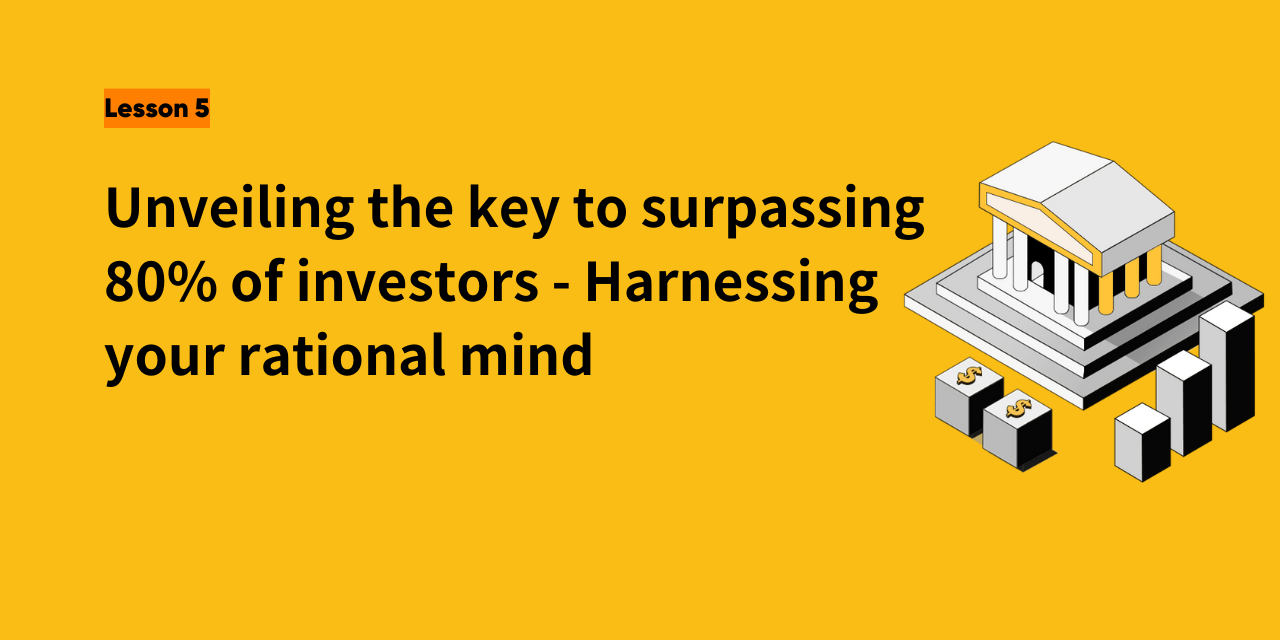Hello Tigers!
In the previous session, I covered the herd effect, elucidating the psychological foundations of speculative trading and herd investing. Now, in this lesson, I'll discuss leveraging behavioral finance to enhance investment choices and engage your rational thinking.
1.What is Irrational Decision-Making?
Let's start by looking at a phenomenon. In the stock market, there are bull markets and bear markets, but many investors fail to make money in bull markets and end up losing big in bear markets. Why is that?
Let's analyze it briefly:
During bull markets, when stock prices generally rise, Tiger Friends are usually in a profitable state. However, many Tiger Friends often can't hold onto their stocks and tend to sell after a significant rise of 20-30%.
In bear markets, when stock prices generally fall, many Tiger Friends tend to hold onto their losing positions, unwilling to cut their losses. They hold onto their stocks throughout the bear market, hoping for a break-even day. When the price finally returns to their original purchase price, many rush to sell, only to see the price skyrocket, leaving them full of regret.
The reason for these phenomena is that people exhibit risk aversion when they are making profits and loss aversion when they are facing losses. In simple terms, when making money, your brain tells you to take profits and secure gains, while when losing money, your brain tells you to hold on, hoping to break even one day.
Remember these two terms: risk aversion and loss aversion.
Traditional finance believes that people dislike risk, but behavioral finance believes that this aversion to risk only manifests when faced with profits. When faced with losses, people tend to embrace risk and are more inclined to gamble, hoping for a chance to turn things around.
This psychological phenomenon leads to different behavioral decisions for investors in bull and bear markets: during bull markets, investors tend to be eager to take profits, often missing out on even greater gains; while in bear markets, they fear taking losses and are reluctant to cut their losses, ultimately leading to significant losses.
The irrational decisions driven by risk aversion and loss aversion often lead to incorrect judgments, resulting in either no profits or losses in investments.
2.How to Improve Investment Decisions Using Cognitive Psychology
Now that we understand people's different risk preferences when making profits and facing losses, as well as the different manifestations of loss aversion in bull and bear markets, what should we do?
Below, I'll introduce you to two secrets:
(1) Reduce cost-thinking and make decisions based on expectations
Whether it's risk aversion or loss aversion, it's essentially comparing the present value of assets with their costs. When the present value is higher than the cost, a profit gap is generated; when the present value is lower than the cost, a loss gap is generated.
The larger the profit gap and loss gap, the more likely it is to cause risk aversion and loss aversion. Therefore, your focus should not be on profits and losses, but on overcoming the influence of costs.
Disregard the initial purchase cost, and the notions of profits and losses fade away. Constantly dwelling on profits and losses keeps you fixated on the past—a backward glance. Effective investing involves looking ahead, focusing on the future, and basing decisions on expectations. If you anticipate price increases, maintain or buy; if you foresee declines, promptly cut losses.
(2) Learn hedging thinking and diversify risk with investment portfolios
In the stock market, there's a familiar adage: avoid putting all your eggs in one basket. This wisdom underscores the importance of diversification in investment to mitigate concentration risk.
This is one of the most important theories in rational investment decisions: Portfolio theory.
How do you explain this theory? It's simple:
Consider stock investment as a prime example. Even when you're highly confident that a particular stock will surge, it's unwise to wager all your investment capital on it alone. While you might potentially amplify profits by putting all your funds into that stock should it rise, you'll also magnify losses in the event of a downturn.
So, to reduce risk, you decide to buy another stock. At this point, the price movement direction of the second stock you choose should be opposite or completely unrelated to the first one. The benefit of doing this is that when the first stock plunges, your second stock will bring you profits, thus hedging the losses in your portfolio.
That's what portfolio theory is all about. A portfolio of two stocks is not as effective at diversifying risk as a portfolio of three stocks, and a portfolio of three stocks is not as effective as a portfolio of four stocks - and so on.
Through portfolio theory, diversifying stock investments, the impact of individual stock volatility on the portfolio will be greatly reduced because it will be completely offset by other stocks with opposite volatility. Therefore, what determines the overall risk is no longer the volatility of a single stock, but the correlation between the purchased stocks.
With that, we bring this lesson to a close. Through understanding the causes and remedies for risk aversion and loss aversion, I trust you can effectively implement them in your investment endeavors, employ rational decision-making, and surpass the performance of 80% of investors effortlessly!
In the upcoming lesson, I'll introduce you to several practical investment strategies rooted in behavioral finance, offering insights into yet another unconventional approach to investing!
Stay tuned for the next lesson~

